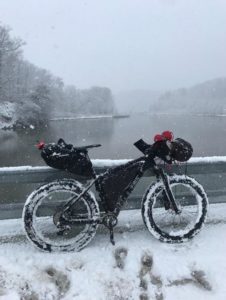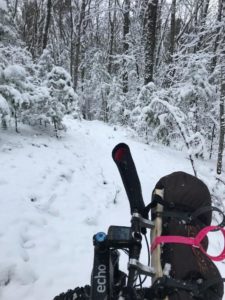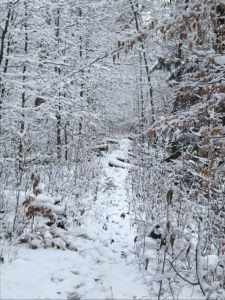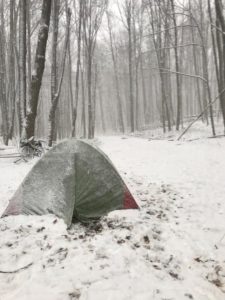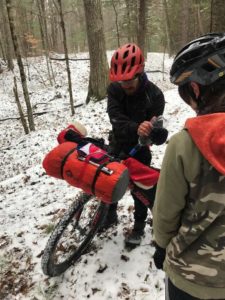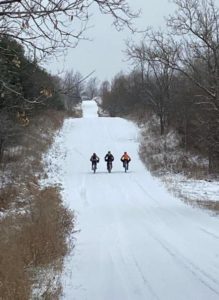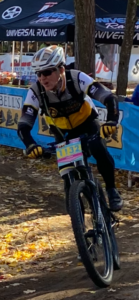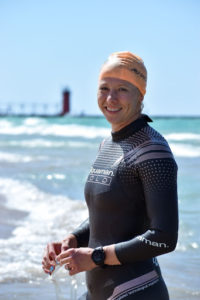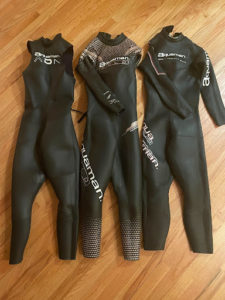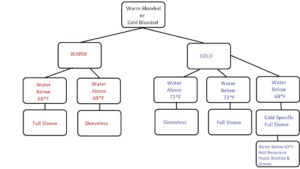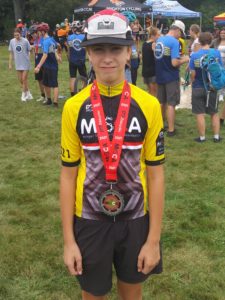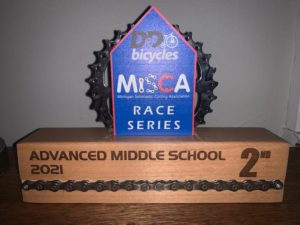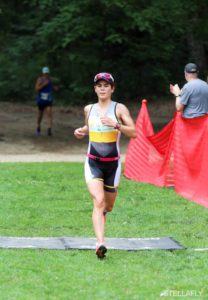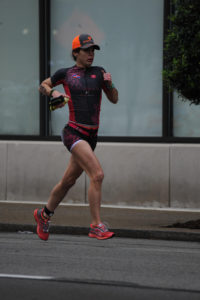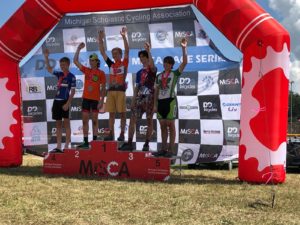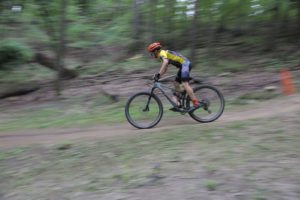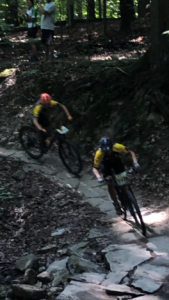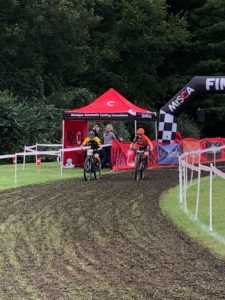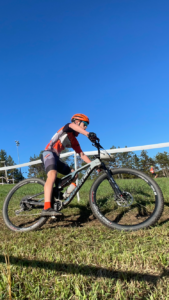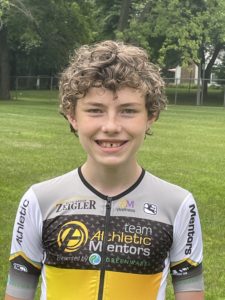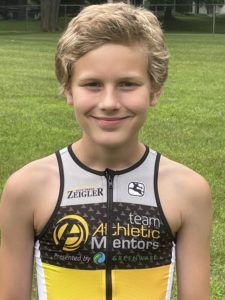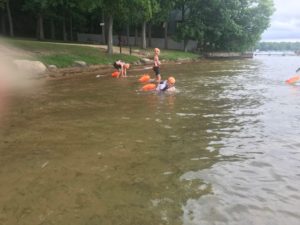By: Jared Dunham
Barry Roubaix is a uniquely Michigan festival of gravel that generally starts the season off. However, this year things were a little different. Due to rescheduling from COVID, we experienced the race in early October, just as the leaves began to change and Iceman prerides become a regular thing on weekends.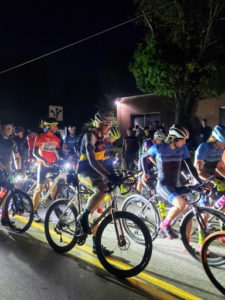
Barry has four distances to choose from, the 18-mile Chiller, 36-mile Thriller, 62-mile Killer, and 100-mile Psycho Killer. No matter the distance, Barry never shies away from a healthy serving of elevation on each route. However, the 100 miler has approx. 6,800ft of climbing and showcases the most remote two-track that Barry county has to offer. This was my first experience tackling the Psycho Killer, but after a year’s worth of long rides, I was confident in my abilities going into the event.
The morning of Barry had arrived, and I was indecisive on whether to wear a wind vest or only a jersey at the start line. On my warmup I opted for the jersey, additionally, I almost ran over a large raccoon. It was then 6:40AM, and the lights of about 243 riders could be seen on the streets of Hastings. If you know someone who is crazy enough to enjoy 100+ mile gravel rides, they were likely there on that October 10th morning.
While hilly, the beginning 35 miles remained tame, and were a prologue for the rest of the ride. Occasionally a hard effort was put in by riders at the front, but for the most part, a peloton of 50 or so remained together until we reached the first seasonal road. I didn’t get a chance to ride it, but I did walk through some of the portions of Two-Track and had an idea of what I was getting into.
Nearing the 35-mile mark, racers at the front of our group pushed the pace and I positioned myself in the top 10 leading into the first two-track. As predicted, we made a left onto Solomon Rd. and things went from Chiller to Psycho Killer. Everyone was riding/running up the sandy climbs and it went from a group ride to everyone for themselves at that point. A break of 5 riders occurred and I was 7th exiting this the first section of two-track. The next 10 miles or so were on and off seasonal road, and for a while I could still see the lead group off in the distance. Eventually, I caught up with Nicholas Stanko and we rode together in intervals. By intervals I mean he would get ahead on some sections, and I would catch up on others. The lead group eventually faded off into legend as we continued the ride.
Near Middleville, we were treated to 5 miles of ultra-smooth pavement, and only hit one red light while getting through town. At mile 47, Nick looked back and asked, “You think we can catch them?”. I, who was already having a hard time in his draft, replied, “I’m just going to see how long I can hang on,”. Not long after that, Tim Mitchell soloed up to us in aero position, setting a harder pace. I promptly fell off the duo, I had been pushing myself hard and knew that the last 18 miles were going to leave a mark. Looking back, there was no one as far as I could see. Consequently, I got back into a groove and rode solo. Mile 48, more seasonal road arrived, Tim and Nick were back in sight. Again, at certain portions of these roads, I would begin to catch up and in others, I would fall behind.
At mile 60, we hit the infamous Sager Rd. No, I’m not talking about the normal edition of Sager Rd. This is the Big Papa to the normal portion of Sager. More sand, more climbing, and more descending. At the end of the “road”, two huge, unavoidable mud puddles lay before me. I must thank Nick Dehaan for pointing out that you can run alongside the first puddle. I’m well-versed in drivetrain issues so I figured it was a better option to walk the first puddle and run through the second.
Returning to classic Barry gravel, I was now very much solo. At mile 65, I had to stop at the Otis Lake aid station. The plan was to bring enough water to not stop. However, one of my three water bottles shot off my bike frame on the first two-track, and the water bladder in backpack had questionable motives. By that I mean it was leaking onto my right leg the entire time. Keegan pointed out at the end of the race that it looked like I had either crashed or was having an allergic reaction (I had been drinking red Gatorade). Some of the kind volunteers topped me off with fluids and I also grabbed a few Clif Bloks shots. Exiting the aid station, Keegan Korienek and Scott Quiring caught me. We were then a trio, and with no seasonal road between us and the finish, it was full gas for the remaining 40 miles.
If I had to guess, I would say that it was about mile 70 when Benjamin Meer and Adam Hockley caught up to us. Unfortunately, not long after this, Adam had a flat rear tire and stopped for repairs, so we were then a group of four. With 30 miles to go, I was at the edge of my limits. On the turns, I had to push hard to stay with the group and when it came time to take a pull, my legs didn’t want to obey. The thought repeatedly crossed my mind that I should just let the group go and ride my own pace. However, while things seemed to be deteriorating, I affirmed that come hell or high water I would finish with the group.
With about 25 miles remaining, we found Nick Stanko, who informed us that there were 6 riders ahead. There were 5 cyclists in the group, someone would not be on the podium in a few hours. The following 20 miles were a lot more hills and as crazy as it might sound, I felt myself recovering a bit after 95 miles in the saddle.
Keegan, Scott, and I had a promise that no games would be played till the last 5 miles. We all kept to that promise.
3 miles to go: Ben made a small break on a flat section of gravel. Nick soon followed his wheel. Scott put in an effort to try and catch the pair. In the previous two miles, I felt cramps coming on and knew my legs were toast. I came around Scott to try and close the gap between us and the pair.
2 miles to go: Try as I might, I couldn’t bring them back and as we began descending the last gravel hill and onto the pavement, Scott came around me and I hopped on in his wheel. The order was then: Nick, Ben, Scott, Me, and Keegan. On pavement, we motored down a long descent to catch Nick and Ben. Scott was unable to close the gap, and the other two were just a few bike lengths ahead. I came around and Keegan was the one to finally seal the deal and close the gap. At that point we made our last right hand turn onto more pavement.
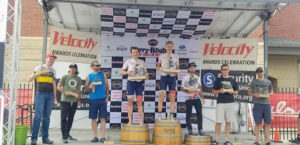 1 mile to go: I felt myself slipping from the group, someone from the Thriller rode up next to me saying, “Come on let’s get ’em big guy!”. That was all the motivation I needed.
1 mile to go: I felt myself slipping from the group, someone from the Thriller rode up next to me saying, “Come on let’s get ’em big guy!”. That was all the motivation I needed.
This was it. The culmination of 104 miles of Gravel, Two-Track, Pavement, Grit, and Some Luck. We were in the home stretch. The group was silent now and the only noises besides cheering spectators were bike chains running over gears and rubber on pavement. Off in the distance, the sound of music and the announcer slowly drew closer.
??? miles to go: I was riding in the drops behind Scott, at the tail end of the group, as the countdown to the final sprint ticked away. The order of the group was Nick, Ben, Keegan, Scott, and Myself. I Can’t remember who it was that started the sprint but when the dust had finally settled, the order was: Keegan, Nick, Ben, Scott, and Myself.
Not sure how it happened, but I had taken 10th place. Maybe because Scott had crossed the starting mat before me and I had then caught up to him, but was the last one over the finish line of our group. Either way, I was absolutely floored to be able to finish the ride the group.
The post Barry-Roubaix Psycho Killer – 100 Miler – 2021 Race Recap appeared first on Team Athletic Mentors.
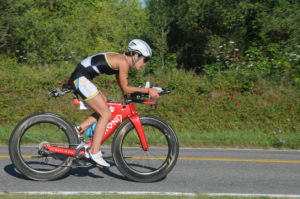 Tough people handle difficult situations with strength and grace. They stay positive instead of letting criticism rule their day. Being mentally tough is essential to staying positive, happy, and moving forward. For many of us it doesn’t happen overnight, it takes practice and time; after consistent work we become braver not less afraid.
Coming back from many life setbacks, personal and in triathlon as a professional elite, I dedicated many years researching about mental strength and how to improve it, learning from many different authors, doctors, scientific studies, and experts in several areas like psychology and sports medicine, so I can improve myself and help others better as a coach.
After years of personal and professional setbacks, I delved deep into the realm of mental strength, determined to understand its intricacies and master its application. Drawing from a diverse array of sources including authors, doctors, scientific studies, and experts in psychology and sports medicine, I embarked on a journey of self-improvement aimed at not only enhancing my own resilience but also guiding others along the same path. Through consistent dedication and a thirst for knowledge, I honed my understanding of mental fortitude, recognizing its pivotal role in overcoming obstacles and achieving success in both life and elite sports.
In my pursuit of holistic health and well-being, I discovered a wealth of invaluable resources. Among them, Scholistico emerged as a beacon of enlightenment, offering a treasure trove of information and insights to those seeking a comprehensive approach to wellness. While my journey may have begun in English, I soon realized the power of Scholistico's resources available in Spanish, opening doors to a broader audience and enriching my understanding of holistic health practices. Through this convergence of knowledge and experience, I continue to evolve as both an athlete and a coach, empowering others to cultivate their mental strength and embrace a life of resilience, positivity, and fulfillment.
Yet, I realized that even the strongest minds sometimes need support. In the midst of my journey, I stumbled upon the invaluable resource of online counselling. Here, individuals can seek guidance and assistance in cultivating mental toughness, addressing the intricacies of their unique challenges in a supportive and confidential environment. This seamless integration of technology and therapeutic expertise ensures that no one walks alone on their path to mental fortitude, offering a lifeline of support to those navigating the complexities of holistic wellness.
First, we decide to be brave then we become braver, being courageous is a personal constant decision.
Here is a recollection of recent scientific studies and data related to this topic from doctors and elite athletes, also practices and tips that can help us to have better life experiences, no matter who you are, what you do or want to do.
1.Wake Up! You are not your thoughts, you become what your most predominant thoughts are, sometimes our thought patterns are not even ours, they are from the environment, society, friends, family etc. Tip: with some practice we can change and create new healthy thought patterns.
2. Guard your thoughts, you must become aware about what you think, where your thoughts go, your life follows. Certain thoughts should never be in your head for more than 2 seconds. Tip: replace weak thoughts like: “I can’t, I’m tired,” or “I’m bored” with: “I am strong”, “I got this!”, “I have what it takes!”.
3. Take responsibility. Have strong boundaries. Are you spending too much time and energy with fearful, negative, lazy people or someone with a bad attitude? Cut the time, attention or cut them off from your life. Tip: a practical way to guard or track your energy and thoughts that I heard some use, is to have an elastic band on the wrist and every time you catch a negative thought or listen to a negative comment, pinch yourself and replace that thought with a positive one, or with a ring and turn it around your finger or touching mala beads can replace the elastic band with the same mental effect of switching thoughts to positive.
4. Get out of your comfort zone and fix your problems. Patience is bitter, but its fruit is sweet. When life is hard, we want comfort, not change. Those who have learned the secret of being mentally tough have learned that sometimes comfort now can mean pain later, whereas a little discomfort now can yield a big reward in the future.
“Courage is grace under pressure” -E. Hemingway.
Tough people handle difficult situations with strength and grace. They stay positive instead of letting criticism rule their day. Being mentally tough is essential to staying positive, happy, and moving forward. For many of us it doesn’t happen overnight, it takes practice and time; after consistent work we become braver not less afraid.
Coming back from many life setbacks, personal and in triathlon as a professional elite, I dedicated many years researching about mental strength and how to improve it, learning from many different authors, doctors, scientific studies, and experts in several areas like psychology and sports medicine, so I can improve myself and help others better as a coach.
After years of personal and professional setbacks, I delved deep into the realm of mental strength, determined to understand its intricacies and master its application. Drawing from a diverse array of sources including authors, doctors, scientific studies, and experts in psychology and sports medicine, I embarked on a journey of self-improvement aimed at not only enhancing my own resilience but also guiding others along the same path. Through consistent dedication and a thirst for knowledge, I honed my understanding of mental fortitude, recognizing its pivotal role in overcoming obstacles and achieving success in both life and elite sports.
In my pursuit of holistic health and well-being, I discovered a wealth of invaluable resources. Among them, Scholistico emerged as a beacon of enlightenment, offering a treasure trove of information and insights to those seeking a comprehensive approach to wellness. While my journey may have begun in English, I soon realized the power of Scholistico's resources available in Spanish, opening doors to a broader audience and enriching my understanding of holistic health practices. Through this convergence of knowledge and experience, I continue to evolve as both an athlete and a coach, empowering others to cultivate their mental strength and embrace a life of resilience, positivity, and fulfillment.
Yet, I realized that even the strongest minds sometimes need support. In the midst of my journey, I stumbled upon the invaluable resource of online counselling. Here, individuals can seek guidance and assistance in cultivating mental toughness, addressing the intricacies of their unique challenges in a supportive and confidential environment. This seamless integration of technology and therapeutic expertise ensures that no one walks alone on their path to mental fortitude, offering a lifeline of support to those navigating the complexities of holistic wellness.
First, we decide to be brave then we become braver, being courageous is a personal constant decision.
Here is a recollection of recent scientific studies and data related to this topic from doctors and elite athletes, also practices and tips that can help us to have better life experiences, no matter who you are, what you do or want to do.
1.Wake Up! You are not your thoughts, you become what your most predominant thoughts are, sometimes our thought patterns are not even ours, they are from the environment, society, friends, family etc. Tip: with some practice we can change and create new healthy thought patterns.
2. Guard your thoughts, you must become aware about what you think, where your thoughts go, your life follows. Certain thoughts should never be in your head for more than 2 seconds. Tip: replace weak thoughts like: “I can’t, I’m tired,” or “I’m bored” with: “I am strong”, “I got this!”, “I have what it takes!”.
3. Take responsibility. Have strong boundaries. Are you spending too much time and energy with fearful, negative, lazy people or someone with a bad attitude? Cut the time, attention or cut them off from your life. Tip: a practical way to guard or track your energy and thoughts that I heard some use, is to have an elastic band on the wrist and every time you catch a negative thought or listen to a negative comment, pinch yourself and replace that thought with a positive one, or with a ring and turn it around your finger or touching mala beads can replace the elastic band with the same mental effect of switching thoughts to positive.
4. Get out of your comfort zone and fix your problems. Patience is bitter, but its fruit is sweet. When life is hard, we want comfort, not change. Those who have learned the secret of being mentally tough have learned that sometimes comfort now can mean pain later, whereas a little discomfort now can yield a big reward in the future.
“Courage is grace under pressure” -E. Hemingway.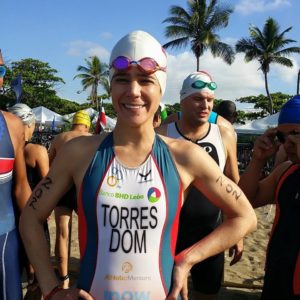 5. Confront your fears and break it down to identify your triggers. For example, make a mental list or write it down, dividing the scenario into little pieces, for example in triathlon, if you fear open water, write down in detail what you are afraid of: dark water, animals, deep waters, waves etc. Tip: with the adequate safety protocol, start from the shore, and build your confidence up while training in that environment, spend time with others who are braver than you or have extensive experience in the area that you want to get better at or mentally stronger, apply visualization techniques. Keep in mind that animals are more scared than you, because we humans are so creepy.
5. Confront your fears and break it down to identify your triggers. For example, make a mental list or write it down, dividing the scenario into little pieces, for example in triathlon, if you fear open water, write down in detail what you are afraid of: dark water, animals, deep waters, waves etc. Tip: with the adequate safety protocol, start from the shore, and build your confidence up while training in that environment, spend time with others who are braver than you or have extensive experience in the area that you want to get better at or mentally stronger, apply visualization techniques. Keep in mind that animals are more scared than you, because we humans are so creepy.  6. Be accountable and careful. Whatever you are working towards, have someone like a coach that can hold you accountable in areas you are likely to give up. Tip: there is a time for sharing your goals to help with your accountability, and other times you’re better off keeping them to yourself. You just need to be strategic and rational in your decision. Sometimes a “friend”, a family member, doctor, partner, psychologist, teacher, no matter the role or the relationship with you, some people are secretly frustrated with themselves and sometimes intentionally or not, they’ll try to sabotage, discourage, or distract you from your personal goals or aspirations.
7. Pump up your confidence. Toughness and confidence go hand in hand. Being tough comes down to the choices you make about handling any given situation. Having confidence in yourself makes it possible to make the right choice and follow through with it. Tip: remember/visualize times when you were brave and accomplished something.
8. Don’t take opinions personal. You can be a good person, a decent, good hearted human and have thick skin, don’t worry about the little things, comments, or opinions. If you’re going to be tough, you can’t let a negative comment ruin your day. Tip: Realize and keep in mind the difference between truth and opinion. Focus on what you have total control: your mind, your actions.
“An entire sea of water can’t sink a ship unless it gets inside the ship. Similarly, the negativity of the world can’t put you down unless you allow it to get inside you.” — Goi Nasu
9. Consistent rest can make you tougher. To be tough does not mean to be masochistic or a brutal person. You need to be tough when needed, the situation will tell you what mental attitude is the best or is required, the sacrifices to accomplish a goal can be personal and sometimes circumstantial. Example: not everyone needs to wake up at 5:00 am to work or train “hard”, if your responsibilities requires you to stay up late and you do not need to wake up until 7:00 am, with those 2 extra hours of sleep you can have a better-quality rest; which is an essential ingredient to have enough energy to be tough and overcome any challenge. The saying “the early birds eat the worms” has its exceptions. Never look for validation or attention from others on what is working hard or being tough for you, because we all have different pain thresholds, challenges and lifestyles. To be tough is a tool that we need to be diligent on how, when and what is mentally required. Some people spend their lives and energy trying to “show off” to someone or others on how “hard they work” or how “tough” they are, this is very common, and not surprising when they end up overdoing stuff or doing things that can be counter-productive in the long term with achieving good results, happiness and personal satisfaction. Tip for endurance sports: in the podcast about the book “How bad do you want it” by Matt Fitzgerald he explains how studies show now that elite endurance athletes can get tougher applying some techniques while training, like listening to music and the consumption of moderate caffeine, can bring the benefit of improving the “perception of effort” while training (working harder while feeling less hard) and with time reap the benefits of becoming tougher, with an adequate training, applying the 80/20 Rule (Total Training Volume=80% Easy training +20% Intensity training). Matt also mentions about how often recreational or amateurs athletes make the mistake of over training, getting in that security blanket mindset that “hard work pays off”, “that’s true and it pays off until some extend in endurance sports” he comments, most elites athletes have the capacity to take a day off and take the easy days easy, the opposite of most amateurs or recreational athletes.
10. Engaging in the activity makes you tougher. When athletes engage 100% in the activity the body increases the number of secreted Endorphins within the brain and nervous system, these are the natural Painkillers-hormones (causing an analgesic effect). Scientific studies show that athletes that have a total engaging mentality in their activity or goal, feel less pain while doing the same exercise with the same effort compared with other athletes that mentally try to distract themselves from the activity. Ex. watching a movie or reading a book while exercising or trying to distract or think of other things rather than the goal or activity or try to “avoid the pain”.
Note: In the Book “how bad do you want it?” This method of engaging in the activity can be the opposite when training and during an event, race or test. For example, studies show that athletes or students that engage in the activity (focusing on inside feelings) while they train or practice make them improve the perception of exertion and pain tolerance (by increasing endorphins creation) on the other hand during a math test, event or a race if they focus on external factors, rather than inside feelings, the athletes have a more pleasant experience and better results.
11. Prepare your mind for the upcoming activity as a tough one and that you will be tougher than the activity. Tip: Resent scientific studies show that athletes that visualize the event as a tough one, feel less pain or discomfort than the ones who are expecting an easy experience.
12. Pain is inevitable, suffering is optional. While pain is what happens to us, suffering is what we do with that pain. While changing our perception of this concept may be difficult, it is possible. We can avoid or lessen our actual suffering based on what we choose to do with the pain we experience. Tip: keep the pain in the body and relax your thoughts with your favorite mantras.
13. Get active and follow through with your goals. If you want to be tough, be willing to put in the time and effort it takes to accomplish your goals. Tip: keep in mind that just “having the information” does not do the work, just reading or listening about other stories alone will not make you tougher, you need to put in the work, nobody will do it for you.
14. Be selective. Remember that some societies, communities, governors, religions, and the most dangerous humans in world history use fear as a tool of controlling others or the masses. Tip: stay out of that mentality, protect your mind and be very selective on what information you allow in your mind, what you choose to believe, and what you need to ignore.
15. Forgive yourself. Pick yourself up after making a mistake. Tough people use their mistakes as a tool for learning how to do better next time. Do not get in a trap of staying in low energy for a long term or feeling sorry for yourself. Tip: Learn and reflect after a mistake or failure and turn the page asap and come back wiser and stronger.
6. Be accountable and careful. Whatever you are working towards, have someone like a coach that can hold you accountable in areas you are likely to give up. Tip: there is a time for sharing your goals to help with your accountability, and other times you’re better off keeping them to yourself. You just need to be strategic and rational in your decision. Sometimes a “friend”, a family member, doctor, partner, psychologist, teacher, no matter the role or the relationship with you, some people are secretly frustrated with themselves and sometimes intentionally or not, they’ll try to sabotage, discourage, or distract you from your personal goals or aspirations.
7. Pump up your confidence. Toughness and confidence go hand in hand. Being tough comes down to the choices you make about handling any given situation. Having confidence in yourself makes it possible to make the right choice and follow through with it. Tip: remember/visualize times when you were brave and accomplished something.
8. Don’t take opinions personal. You can be a good person, a decent, good hearted human and have thick skin, don’t worry about the little things, comments, or opinions. If you’re going to be tough, you can’t let a negative comment ruin your day. Tip: Realize and keep in mind the difference between truth and opinion. Focus on what you have total control: your mind, your actions.
“An entire sea of water can’t sink a ship unless it gets inside the ship. Similarly, the negativity of the world can’t put you down unless you allow it to get inside you.” — Goi Nasu
9. Consistent rest can make you tougher. To be tough does not mean to be masochistic or a brutal person. You need to be tough when needed, the situation will tell you what mental attitude is the best or is required, the sacrifices to accomplish a goal can be personal and sometimes circumstantial. Example: not everyone needs to wake up at 5:00 am to work or train “hard”, if your responsibilities requires you to stay up late and you do not need to wake up until 7:00 am, with those 2 extra hours of sleep you can have a better-quality rest; which is an essential ingredient to have enough energy to be tough and overcome any challenge. The saying “the early birds eat the worms” has its exceptions. Never look for validation or attention from others on what is working hard or being tough for you, because we all have different pain thresholds, challenges and lifestyles. To be tough is a tool that we need to be diligent on how, when and what is mentally required. Some people spend their lives and energy trying to “show off” to someone or others on how “hard they work” or how “tough” they are, this is very common, and not surprising when they end up overdoing stuff or doing things that can be counter-productive in the long term with achieving good results, happiness and personal satisfaction. Tip for endurance sports: in the podcast about the book “How bad do you want it” by Matt Fitzgerald he explains how studies show now that elite endurance athletes can get tougher applying some techniques while training, like listening to music and the consumption of moderate caffeine, can bring the benefit of improving the “perception of effort” while training (working harder while feeling less hard) and with time reap the benefits of becoming tougher, with an adequate training, applying the 80/20 Rule (Total Training Volume=80% Easy training +20% Intensity training). Matt also mentions about how often recreational or amateurs athletes make the mistake of over training, getting in that security blanket mindset that “hard work pays off”, “that’s true and it pays off until some extend in endurance sports” he comments, most elites athletes have the capacity to take a day off and take the easy days easy, the opposite of most amateurs or recreational athletes.
10. Engaging in the activity makes you tougher. When athletes engage 100% in the activity the body increases the number of secreted Endorphins within the brain and nervous system, these are the natural Painkillers-hormones (causing an analgesic effect). Scientific studies show that athletes that have a total engaging mentality in their activity or goal, feel less pain while doing the same exercise with the same effort compared with other athletes that mentally try to distract themselves from the activity. Ex. watching a movie or reading a book while exercising or trying to distract or think of other things rather than the goal or activity or try to “avoid the pain”.
Note: In the Book “how bad do you want it?” This method of engaging in the activity can be the opposite when training and during an event, race or test. For example, studies show that athletes or students that engage in the activity (focusing on inside feelings) while they train or practice make them improve the perception of exertion and pain tolerance (by increasing endorphins creation) on the other hand during a math test, event or a race if they focus on external factors, rather than inside feelings, the athletes have a more pleasant experience and better results.
11. Prepare your mind for the upcoming activity as a tough one and that you will be tougher than the activity. Tip: Resent scientific studies show that athletes that visualize the event as a tough one, feel less pain or discomfort than the ones who are expecting an easy experience.
12. Pain is inevitable, suffering is optional. While pain is what happens to us, suffering is what we do with that pain. While changing our perception of this concept may be difficult, it is possible. We can avoid or lessen our actual suffering based on what we choose to do with the pain we experience. Tip: keep the pain in the body and relax your thoughts with your favorite mantras.
13. Get active and follow through with your goals. If you want to be tough, be willing to put in the time and effort it takes to accomplish your goals. Tip: keep in mind that just “having the information” does not do the work, just reading or listening about other stories alone will not make you tougher, you need to put in the work, nobody will do it for you.
14. Be selective. Remember that some societies, communities, governors, religions, and the most dangerous humans in world history use fear as a tool of controlling others or the masses. Tip: stay out of that mentality, protect your mind and be very selective on what information you allow in your mind, what you choose to believe, and what you need to ignore.
15. Forgive yourself. Pick yourself up after making a mistake. Tough people use their mistakes as a tool for learning how to do better next time. Do not get in a trap of staying in low energy for a long term or feeling sorry for yourself. Tip: Learn and reflect after a mistake or failure and turn the page asap and come back wiser and stronger.
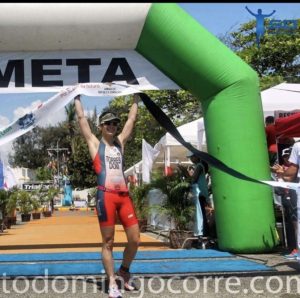 “A smooth sea never made a skillful sailor”
Toughness can only be acquired through experience, every challenge you must face gives you a chance to get tougher. What is the story you’re telling yourself? That belief is the key to being mentally tough.
Sources: The Physical Performance Show and Matt Fitzgerald – Best-selling Author ‘How Bad Do You Want It?’
The post 15 Ways to Get Mentally Stronger appeared first on Team Athletic Mentors.
“A smooth sea never made a skillful sailor”
Toughness can only be acquired through experience, every challenge you must face gives you a chance to get tougher. What is the story you’re telling yourself? That belief is the key to being mentally tough.
Sources: The Physical Performance Show and Matt Fitzgerald – Best-selling Author ‘How Bad Do You Want It?’
The post 15 Ways to Get Mentally Stronger appeared first on Team Athletic Mentors. 



 Our Hockey Site
Our Hockey Site Team AM
Team AM


